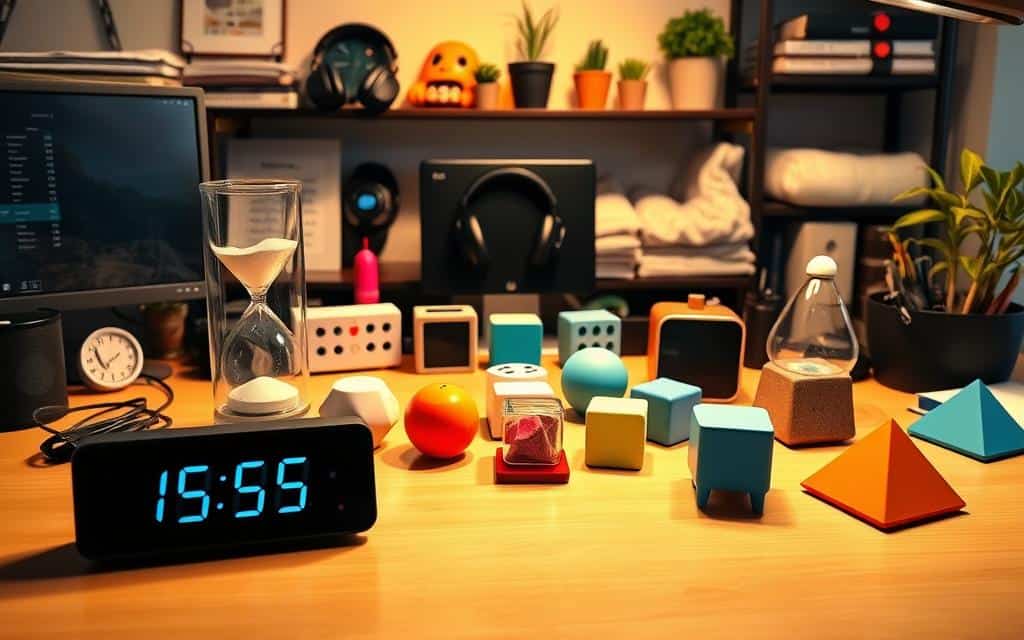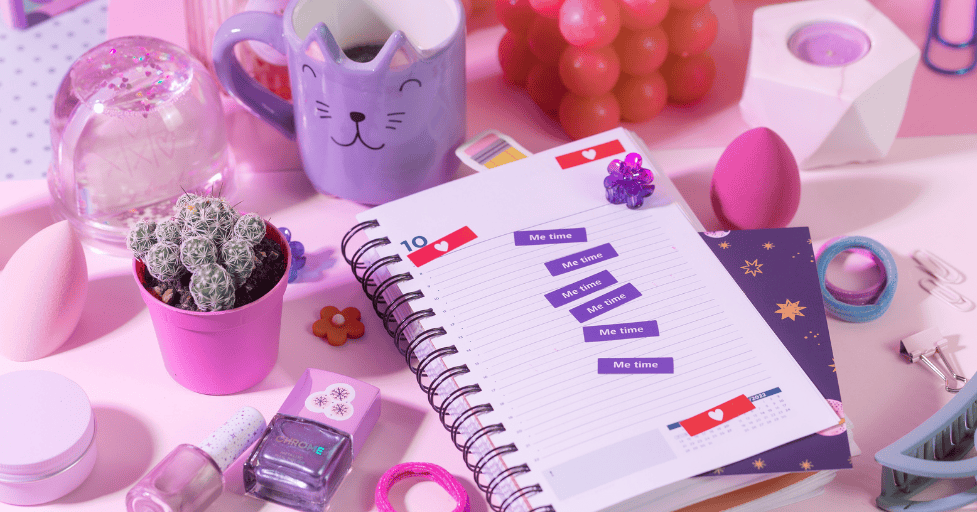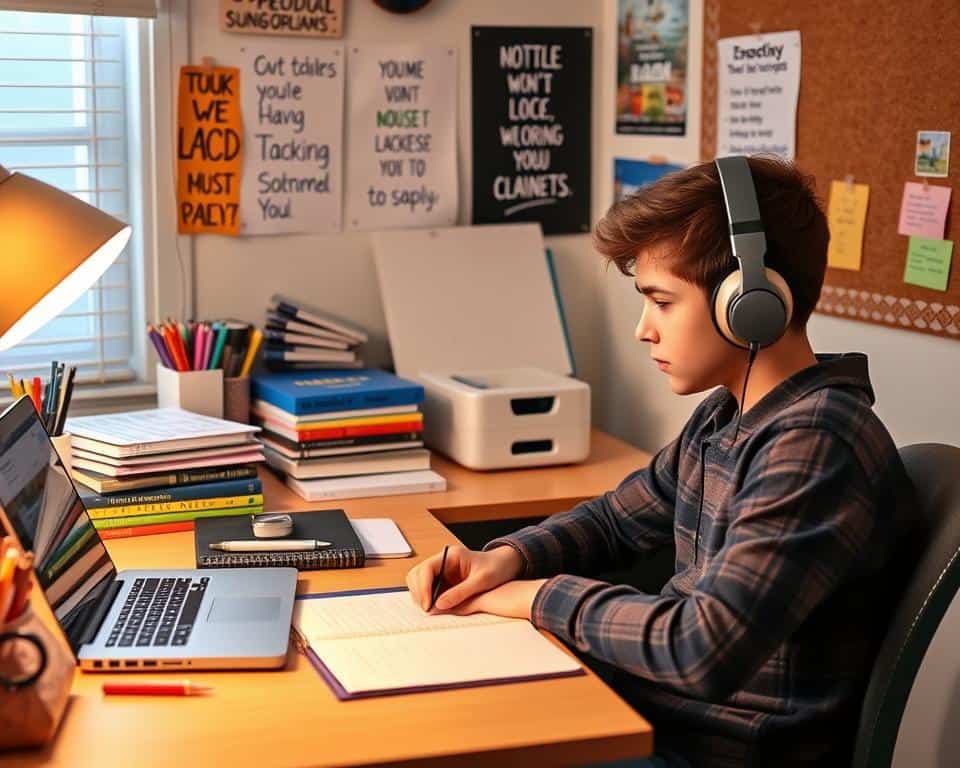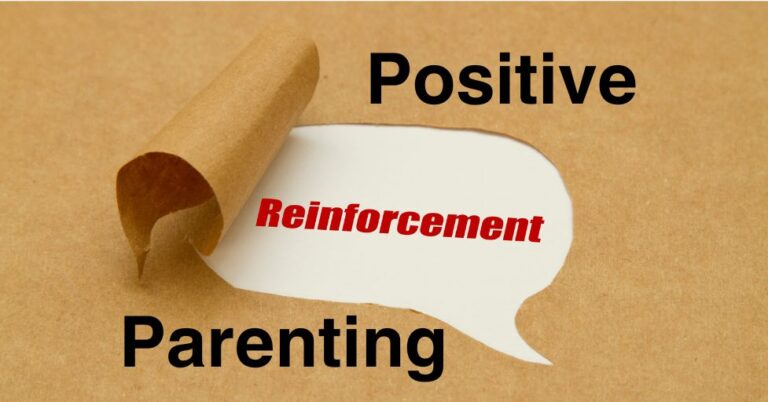ADHD Homework Tips: 15 Proven Strategies to Help Kids Focus and Finish Faster
Disclosure: This post may contain affiliate links, meaning I may get a small commission if you decide to make a purchase through my links, at no cost to you.

Have you ever watched your child sit at the kitchen table for hours, staring at a simple math worksheet that should take twenty minutes? I know that feeling all too well!
Hey there, fellow parents and caregivers! I’m thrilled to share these game-changing strategies with you today. As a mom of four kids and an educator, I’ve found what really makes a difference.
These aren’t just random suggestions – they’re proven techniques that have changed how kids do homework. They help kids finish their work faster and with less stress. Whether your child struggles to focus or you’re an educator looking for new ideas, these 15 strategies are here to help.
I’ve seen these methods work wonders in my classroom, and I’m excited for you to try them at home. Let’s make those overwhelming evenings victories for everyone! 🌟
Key Takeaways
- Proven strategies can transform daily assignment struggles into manageable routines
- Both parents and educators can benefit from these research-backed techniques
- Focus improvement leads to faster completion and reduced stress for kids
- Simple environmental and routine changes make significant differences
- These methods work for various learning styles and attention challenges
- Consistent application of these tips creates lasting positive changes
Understanding ADHD and Homework Challenges
Supporting ADHD children in their studies has taught me a lot. It’s not about being lazy or not caring. It’s about how their brains work differently.
ADHD affects executive functioning. This is like the brain’s personal assistant. It helps with time management, staying organized, and focusing. Without it, even simple tasks become huge challenges.

Many students with attention deficit struggle to start their homework. They might stare at a math worksheet for twenty minutes without writing anything. Their brains are trying hard to decide where to begin.
These kids face big hurdles like working memory challenges, starting tasks, and staying focused. Working memory is like trying to remember a phone number while looking for a pen. For them, this mental task is very tiring.
Completing assignments with attention deficit needs special strategies. When we work with their brains, amazing things happen! They show incredible creativity, problem-solving skills, and unique views once we help them.
Every ADHD brain is beautifully unique. What works for one might not work for another. It’s important to see these differences as strengths, not weaknesses. 💙
1. Creating a Distraction-Free Study Environment
Working with ADHD students for years, I’ve seen a special thing. The right study space can make their brain superpower strong! Kids who couldn’t sit still for five minutes now focus for hours. It’s not magic; it’s a distraction-free study environment that fits their brain.
What looks organized to us might overwhelm ADHD kids. Those colorful classroom posters I loved became distractions! I learned to aim for “calm and cozy” instead of “bright and busy.” The change in my students was amazing.

Eliminate Visual and Auditory Distractions
Visual clutter is a big problem for ADHD brains. I recall a student who couldn’t focus until we removed a pencil holder with many pens! Reducing distractions for adhd homework means clearing the visual space.
Here’s what to remove from the study area:
- Busy wallpaper or posters directly in the line of sight
- Multiple colored supplies scattered around
- Electronics like tablets, phones, or gaming devices
- Toys or collectibles that might tempt wandering hands
For auditory distractions, place the homework area away from busy spots. The kitchen during dinner prep is not ideal! A quiet corner of the living room or bedroom works better.
Noise-canceling headphones can be a big help. I’ve seen kids who couldn’t focus with siblings nearby suddenly focus deeply with these tools.
2. Establish a Dedicated Homework Zone

You don’t need fancy equipment – a simple card table in a quiet corner can work! The key is consistency. When your child sits in their spot, their brain learns “this is where we study and work.”
The perfect homework zone includes:
- Good lighting that doesn’t create shadows on their work
- A comfortable chair that supports good posture
- Easy access to necessary supplies without clutter
- A clear surface with enough space for books and papers
I always tell parents that the homework zone should feel like a safe haven for learning. Make it welcoming, not scary. Some kids like a small plant or a meaningful photo nearby.
3. Use Background Noise Strategically
Something surprised me early in my teaching career: some ADHD brains focus better with certain background noise! It’s like creating a focus bubble that blocks out distractions.
The right background noise can help your child’s brain ignore interruptions. White noise, nature sounds, or soft instrumental music work well. I’ve had students say rain sounds help them think clearer!
| Background Noise Type | Best For | When to Use | Potential Benefits |
|---|---|---|---|
| White Noise | Highly distractible children | Noisy environments | Masks sudden sounds, creates consistency |
| Nature Sounds | Anxious or stressed students | Evening homework sessions | Promotes calm focus, reduces anxiety |
| Instrumental Music | Creative assignments | Writing or art projects | Enhances creativity, maintains engagement |
| Complete Silence | Auditory-sensitive children | Reading comprehension tasks | Eliminates all distractions, deepest focus |
Finding what works for your child’s brain is key. Some need silence, while others study better with sounds. Try different things during low-stakes homework to find what they like.
Creating the perfect study environment is a journey. What works in September might change by January as your child grows. Stay flexible, keep watching, and celebrate the small wins!
Essential ADHD Homework Tips for Time Management
Teaching time management techniques for ADHD students is like giving them a superpower. It turns homework battles into victories. These strategies are battle-tested and work.
ADHD brains process time differently. What feels like five minutes to us can feel like an hour to them. We need special tools and techniques to make time visible and manageable.

4. Break Large Assignments into Smaller Tasks
This technique is magical! Jake, a fourth-grader, would melt down at book report assignments. The whole project felt like climbing Mount Everest.
We broke it down into tiny, doable steps. First, read one chapter. Then write three sentences about the main character. Next, find two interesting facts from that chapter.
Breaking down assignments adhd style means creating a roadmap with clear stops. Each small task feels achievable. Kids get that wonderful sense of accomplishment multiple times instead of just once at the end.
Try this simple formula: Divide big assignments into tasks that take 10-15 minutes each. Write each step on a separate sticky note. Kids love checking things off their list!
5. Use Visual Timers and Time-Blocking Methods

Visual timers are awesome. They make time concrete and real. I love those colorful countdown timers that show time disappearing like sand in an hourglass.
Time-blocking works beautifully with ADHD brains. We assign specific blocks of time to different subjects or tasks. Math gets the green block from 4:00-4:30. Reading gets the blue block from 4:30-5:00.
The magic happens when kids can see their time instead of just feeling it slip away. They start to understand how long things actually take. No more “just five more minutes” that turns into thirty!
Here are my favorite timer strategies:
- Use different colored timers for different subjects
- Set a timer for breaks too—this prevents endless break time
- Let kids choose their timer sound (but keep it gentle, not jarring)
- Celebrate when they beat the timer!
6. Implement the Pomodoro Technique for Focus

The Pomodoro Technique is perfect for ADHD students. It matches how their brains naturally want to work—in focused bursts! The traditional method uses 25-minute work periods followed by 5-minute breaks.
I’ve seen kids go from homework meltdowns to actually asking for “one more Pomodoro” because they feel so accomplished. It’s like magic watching their confidence grow!
For younger kids or those with severe attention challenges, start with shorter intervals. Maybe 15 minutes of work and 3-minute breaks. The key is finding their sweet spot where they can maintain focus without feeling overwhelmed.
During the break time, encourage movement. Jump up and down, do jumping jacks, or just stretch. This helps reset their brain for the next focused session.
| Age Group | Work Period | Break Time | Daily Sessions | Best Activities During Breaks |
|---|---|---|---|---|
| Ages 6-8 | 10-15 minutes | 3-5 minutes | 3-4 sessions | Physical movement, stretching |
| Ages 9-12 | 15-20 minutes | 5 minutes | 4-5 sessions | Quick walk, light snack |
| Ages 13-16 | 20-25 minutes | 5-10 minutes | 5-6 sessions | Music, social media check |
| Ages 17+ | 25-30 minutes | 5-15 minutes | 6-8 sessions | Whatever refreshes them |
Remember, these time management techniques adhd students need aren’t about perfection—they’re about progress. Some days will be better than others, and that’s completely normal. The goal is building skills that will serve them for life.
Start with just one technique and master it before adding another. I’ve seen families try to implement everything at once and get overwhelmed. Pick the strategy that excites your child most, and build from there!
Organization Strategies for ADHD Students
Organizing homework with ADHD isn’t about being perfect. It’s about finding systems that work. I’ve seen how the right approach can boost a child’s confidence and grades. It’s about making things clear and breaking down big tasks into smaller steps.

Seeing kids get excited about their new systems is amazing. Organization skills for adhd students need to be easy to see, simple, and consistent. Here are three strategies that have made a big difference in my classroom and homes.
7. Color-Code Subjects and School Materials
Color-coding makes each subject unique. It helps ADHD brains quickly find what they need. This system is easy to use and helps avoid confusion.
Here’s how to set up a color-coding system:
- Red for math – folders, notebooks, and pencil cases
- Blue for science – all materials in this calming color
- Green for reading – makes it easy to grab and go
- Yellow for social studies – bright and attention-grabbing
- Purple for electives – art, music, or other special classes
When kids see their green folder, they know it’s time for reading. This visual connection saves mental energy and makes organizing easier.
8. Create Daily Assignment Tracking Systems
Tracking daily assignments doesn’t have to be hard. Simple checklists can work better than fancy planners. ADHD students do best with systems they can see and touch.
My favorite tracking methods include:
- Assignment sticky notes – one task per note, move to “done” pile
- Simple checkbox lists – satisfying to check off completed work
- Weekly assignment boards – visual overview of the entire week
- Photo documentation – take pictures of assignment boards at school
When kids can physically mark off tasks, they feel a sense of achievement. This helps them see their progress clearly.
9. Use Physical and Digital Organization Tools
The best adhd study aids mix physical and digital tools. Start with physical tools since they’re easier for ADHD brains to handle.
Physical organization tools:
- Accordion folders with color-coded sections
- Desktop organizers with compartments
- Large wall calendars for visual planning
- Timer cubes for time management
Digital resources that complement physical systems:
- Smartphone apps for assignment reminders
- Digital calendars synced with family devices
- Voice recording apps for quick note-taking
- Photo storage for important school documents
Remember, organization takes practice. Be patient and celebrate small victories! The goal is to find systems that reduce stress and help succeed in school and at home.
Building Consistent Homework Routines
Homework routines for ADHD children are like magic when they become automatic. I’ve seen many families find success with them. These routines give kids the predictability their brains love.
Routines cut down on decision fatigue. Kids can focus on their homework without worrying about when or where. Consistency is key, not perfection.

10. Establish Regular Start Times and Schedules
Starting homework routines for ADHD means picking the same time every day. Life can get busy, but sticking to a routine helps a lot.
Some kids do best right after school. Others need a break first. It’s important to find what works for your child and stick with it.
Here’s what I’ve learned works best for different types of ADHD kids:
| Child Type | Best Homework Time | Why It Works | Prep Needed |
|---|---|---|---|
| High Energy | Right after school | Uses existing momentum | Healthy snack ready |
| Needs Decompression | After 30-minute break | Allows mental reset | Quiet transition activity |
| Evening Focused | After dinner | Family time energizes them | Good lighting setup |
| Morning Person | Before school | Peak focus hours | Earlier bedtime routine |
11. Create Pre-Homework Transition Rituals

Transition rituals are key for ADHD brains. They help kids shift gears smoothly. Creating a “homework launch sequence” can be a game-changer.
One family does three stretches and clears the table. Another child needs deep breathing and organizing their space. These rituals signal focus time.
“Routines are not about rigidity; they’re about creating a safe, predictable world where children can flourish and develop their independence.”
It’s important to read your child’s cues and adjust routines as needed. Maybe they need to do jumping jacks or chat about their day. The goal is to make it consistent and automatic.
Visual routine charts are also helpful. Kids feel proud when they can follow their routine without reminders. It boosts their independence and confidence.
Proven Focus Strategies for ADHD Children
Teaching focus strategies for ADHD students is not about forcing their attention. It’s about giving them the right tools to shine. I’ve seen many children improve their homework when we find the right technique for them. These strategies are like special tools that fit how ADHD brains work.
These techniques are free and can be used anywhere. What works today might change tomorrow, and that’s okay! Parents, remember, being flexible is key when teaching ADHD study skills.

12. Practice Mindfulness and Deep Breathing
Mindfulness might seem too grown-up for kids, but simple breathing techniques work wonders. The “balloon breath” is great – kids inflate their belly like a balloon, hold for three counts, then slowly let the air out. This helps their nervous system and gets their brain ready to learn.
The 5-4-3-2-1 grounding exercise is also effective. Kids name 5 things they see, 4 things they hear, 3 things they can touch, 2 things they smell, and 1 thing they taste. This exercise helps them focus and feel grounded.
These strategies for focus in students with ADHD are not just fun activities. They actually change brain chemistry, helping kids do their best during homework.
13. Incorporate Movement Breaks and Fidget Tools

Movement breaks are crucial for ADHD brains. I suggest two-minute dance parties, wall push-ups, or simple stretches. These breaks should be short and focused.
Fidget tools can be very helpful if chosen right. Think stress balls, fidget cubes, or a paperclip to bend quietly. The key is finding “quiet” fidgets that don’t distract.
I remind parents that these tools are not rewards but essential for ADHD brains. When we respect how their minds work, homework becomes much easier!
| Focus Strategy | Best Time to Use | Duration | Age Group |
|---|---|---|---|
| Balloon Breathing | Before starting homework | 2-3 minutes | Ages 6-12 |
| 5-4-3-2-1 Grounding | When feeling overwhelmed | 3-5 minutes | Ages 8-16 |
| Movement Breaks | Between subjects | 2-5 minutes | All ages |
| Fidget Tools | During focused work | Continuous | Ages 7-14 |
Executive Functioning Support Techniques
Think of executive functioning as your child’s internal GPS for learning. It guides ADHD kids through homework and assignments. Learning to be their own learning coaches can be amazing!
Watching children go from feeling overwhelmed to empowered is beautiful. They learn how their ADHD brain works best. It’s about helping them become experts on themselves.

Teach Self-Monitoring and Progress Tracking
Self-monitoring is about helping kids tune into their learning. We start with something simple. Students rate their focus level before starting adhd executive function homework.
Then, we check in halfway to see how they’re doing. This simple practice helps kids recognize when they need a break or a different strategy.
Progress tracking can be as simple as a colorful chart. Or it can be more detailed, like a reflection journal. This helps kids reflect on their progress.
Here’s a simple tracking system that works wonders for many families:
| Focus Check-In | What to Ask | Action Steps | Celebration Ideas |
|---|---|---|---|
| Before Starting | “How focused do I feel right now?” | Rate 1-10, adjust environment if needed | High-five for honest self-assessment |
| Halfway Through | “Am I still on track?” | Take break if focus drops below 6 | Praise for checking in with themselves |
| After Completion | “What worked well today?” | Write down successful strategies | Share wins with family at dinner |
| Weekly Review | “What patterns do I notice?” | Adjust strategies based on what works | Plan special activity for consistent effort |
The magic happens when kids see patterns in their learning. They might notice they complete assignments faster with a fidget toy. These insights become powerful tools for their lives.
I remember one student who felt helpless about her ADHD at the beginning of the school year. By teaching her to track her progress and monitor her focus, she became confident in managing her own learning. She even started helping other students with their executive functioning strategies for school!
The key is making this process feel like a fun experiment. When children see themselves as scientists studying their own amazing brains, they become excited about discovering what works best for them.
Parent-Teacher Collaboration for Homework Success

When families and teachers team up, amazing things happen for ADHD students. Collaboration between parents and teachers is key for their homework success.
Seeing the change is incredible. When we share what we know, students do better. Parents know their child’s home life, and teachers know the classroom. Together, we create a strong support system.
Parent-teacher partnerships are special because we each bring something unique. Parents know their child’s interests and what motivates them. Teachers know what’s expected in school. Together, we make personalized strategies that work.
It’s great when parents share what works at home. Maybe music helps, or a short walk before homework. These tips help me support students in school too.
Implement Consistent Communication Systems
Effective communication is simple. The best partnerships use easy, consistent methods that fit everyone’s schedule.
Weekly check-ins can be as easy as an email or a shared document. I encourage parents to share what’s working and any challenges. This helps me adjust my support.
When talking about homework accommodations for ADHD, be specific. Maybe your child needs more time or assignments broken down. Some students need instructions repeated or in a different format.
Be proactive, not reactive. Don’t wait for a crisis to talk. Regular conversations help us solve small problems before they grow.
Sharing your child’s strengths and interests is a game-changer. If they love dinosaurs or Legos, I can use those to make learning fun. Homework becomes an adventure!
We all want your child to succeed. With consistent communication, ADHD students can thrive. Amazing things happen when we work together! 🤝
Common Homework Mistakes to Avoid with ADHD Students
I wish I could tell my younger self about common mistakes. These mistakes trip up many parents. Knowing what to avoid makes things easier!

The biggest mistake is trying to make ADHD kids work like others. Expecting them to sit still for hours is unrealistic. Their brains work differently, and that’s okay!
Here are common homework mistakes I’ve seen:
- Over-helping and rescuing: We hate seeing our kids struggle. But helping too much takes away their chance to learn.
- Creating power struggles: Homework shouldn’t be a fight. It’s better for everyone if we don’t turn it into a battle.
- Expecting daily consistency: ADHD brains have good and tough days. Some days they do well, others it’s hard.
- Focusing only on the end result: It’s important to celebrate effort and strategies, not just right answers.
Another big mistake is comparing your ADHD child to others. Their brain works differently. Comparing hurts their self-esteem.
I wish parents understood that consistency doesn’t mean perfection. Your child might need different strategies each day. That’s okay, not a failure.
The goal isn’t to make your ADHD child fit into a neurotypical box. The goal is to help them succeed using their unique strengths.
Some families think they must use the same approach every day. But ADHD kids often need variety. What works one day might not work the next.
Remember, these mistakes don’t make you a bad parent. They make you human! We all want to help our kids succeed. The key is learning from these mistakes and adjusting our approach. Your child doesn’t need you to be perfect; they need you to be understanding and flexible.
Trust me, once you start working with your child’s ADHD brain, homework becomes easier for everyone! 💙
Conclusion
We’ve covered a lot together! As a parent and educator, I want you to know how dedicated you are to your kids’ success. The 15 strategies we talked about aren’t about making perfect students. They’re about boosting confidence and making homework less stressful.
Begin with just two or three techniques that feel right for your family. Remember, progress is more important than perfection! Some days will go smoothly, while others might need more patience. This is normal when helping children who learn differently.
Your child’s brain is amazing, even when homework seems tough. I’ve seen many families turn homework battles into chances for growth. Every small step forward is something to celebrate.
School doesn’t have to be a constant fight. With the right support and these free resources, you’re setting your child up for success. Keep fighting for your child, stay open to what works, and know you’re not alone.
Your commitment to your child’s well-being is crucial. Trust the journey, celebrate the victories, and watch your child discover their amazing potential!
Resources: Understanding ADHD and Homework Challenges
Scientific & Scholarly Sources
Kofler, M. J., Irwin, L. N., Soto, E. F., Groves, N. B., Harmon, S. L., & Sarver, D. E. (2019). “Executive functioning heterogeneity in pediatric ADHD.” Journal of Abnormal Child Psychology. This comprehensive study demonstrates that 62% of children with ADHD show working memory deficits, supporting the blog’s claims about executive functioning challenges.
Merrill, B. M., Morrow, A. S., Altszuler, A. R., Macphee, F. L., Gnagy, E. M., Greiner, A. R., … & Pelham Jr, W. E. (2017). “Improving homework performance among children with ADHD: A randomized clinical trial.” Journal of Consulting and Clinical Psychology. This randomized clinical trial provides evidence for homework interventions specifically designed for children with ADHD.
Zylowska, L., Ackerman, D. L., Yang, M. H., Futrell, J. L., Horton, N. L., Hale, T. S., … & Smalley, S. L. (2008). “Mindfulness meditation training in adults with ADHD: A feasibility study.” Journal of Attention Disorders. This study supports the blog’s recommendations for mindfulness and breathing techniques as effective interventions for ADHD symptoms.
Online Resources
Children and Adults with Attention-Deficit/Hyperactivity Disorder (CHADD) – The nation’s leading nonprofit organization serving individuals with ADHD, offering evidence-based resources for educators, parents, and professionals working with ADHD students.
ADDitude Magazine’s Homework Help Section – A comprehensive collection of expert-reviewed articles, strategies, and downloadable resources specifically focused on homework challenges for ADHD students and their families.
National Resource Center on ADHD – A program of CHADD funded by the Centers for Disease Control and Prevention, providing science-based information about ADHD for parents, educators, and healthcare professionals.
Recommended Books
Dawson, Peg, and Richard Guare. “Smart but Scattered: The Revolutionary ‘Executive Skills’ Approach to Helping Kids Reach Their Potential” – This groundbreaking book provides practical strategies for developing executive functioning skills in children, directly supporting the organizational and time management techniques discussed in the blog.
Barkley, Russell A. “Taking Charge of ADHD: The Complete, Authoritative Guide for Parents” – Written by a leading ADHD researcher, this comprehensive guide offers evidence-based strategies for managing ADHD at home and school, including detailed homework intervention approaches.
Zentall, Sydney S., and Sam Goldstein. “Seven Steps to Homework Success: A Family Guide for Solving Common Homework Problems” – A practical, step-by-step guide that addresses specific homework challenges faced by children with learning differences, including ADHD.
Multimedia Resources
ADHD Experts Podcast – “Homework Help for ADHD Kids” – Features interviews with leading ADHD specialists discussing evidence-based homework strategies and parent-teacher collaboration techniques.
TED Talk: “How to Help Kids with ADHD Thrive” by Dr. Shimi Kang – A pediatrician and expert in child development explains the neuroscience behind ADHD and offers practical strategies for supporting children’s success.
YouTube: “ADHD Study Tips – Time Timer Techniques” by How to ADHD – This educational channel provides visual demonstrations of time management techniques, including the visual timers and Pomodoro methods mentioned in the blog.
Podcast: “ADHD reWired” with Eric Tivers – Weekly episodes featuring practical ADHD management strategies, including episodes specifically focused on academic success and homework completion for ADHD students.
GET FREE ACCESS TO OUR LIBRARY OF FREE PRINTABLES AND RESOURCES!
Enter Your Name and Email for FREE Access to our Library of FREE Home and Family Printables Series!





